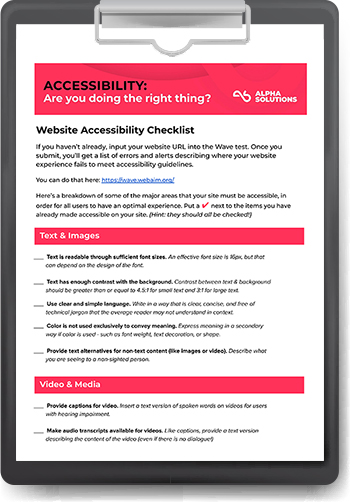Tapping into the power of personalization in e-commerce is an excellent way to experience unprecedented growth, customer loyalty, and, ultimately, the long-term success of your enterprise.
What is personalization in e-commerce?
Simply put, personalization in e-commerce refers to the practice of creating personalized experiences for online shoppers.
Before we get into more details, let’s look at how we got here in the first place.
Once upon a time, if you needed to buy something, you had to
…go to a store,
…wait for a door-to-door salesperson, or
…order it by phone or mail.
If you went the in-person route, an employee would help you find an item that would suit your needs, wants, and budget.
The goal was to provide a positive shopping experience so you would keep going to that store to buy more things.
Now that fewer people go to actual stores to forage and shop as our neolithic ancestors did, personalization in e-commerce can provide the same level of customer satisfaction, improving the overall shopping experience and, of course, boosting sales.
Would you like a little history lesson about the progression of personalization in e-commerce? I thought you’d never ask.
The Rise of Personalized E-Commerce: A Timeline
Personalization in e-commerce dates back to the dawn of the 21st century. But it was not on the radar of your everyday online retailer until the past few years.
Here’s a brief timeline to show the progression of personalized e-commerce:
📍 Early 2000s: The Baby Days of E-Commerce Personalization
In the early 2000s, e-commerce personalization was rudimentary at best. Online retailers focused on making simple recommendations based on our purchase history or purchases made by others in our demographic.
Amazon was a pioneer of e-commerce personalization, impressing us and motivating us to spend our money by showing us products we might like based on previous purchases and items viewed. (They were right a lot of the time.)
📍 Mid 2000s: The Rise of Data Analytics
As digital technology improved, e-commerce platforms began using data analytics more extensively.
This era saw the introduction of more sophisticated algorithms that could analyze a user's browsing history, purchase history, and even time spent looking at (obsessing over) specific products.
This level of consumer intel allowed for more personalized recommendations. Almost like magic. (Take our money!)
📍 Late 2000s to Early 2010s: Social Media Integration and Mobile Shopping
The integration of social media and the rise of mobile shopping opened up a ton of opportunities for e-commerce personalization. We were freely handing over our personal information to social media platforms, and those platforms figured out how to monetize it (and use it against us).
E-commerce businesses started leveraging not only this data but also our social media behavior and mobile app usage patterns to personalize marketing messages and offer intuitive product recommendations.
📍 Mid 2010s: Machine Learning and AI
The introduction of machine learning and artificial intelligence marked a significant leap in the capabilities of e-commerce personalization.
Artificial intelligence (AI) algorithms could predict customer preferences with high accuracy, personalize search results in real-time, and automate customer service with chatbots, providing a more personalized shopping experience than we’d ever seen online.
📍 Late 2010s to Early 2020s: Hyper-Personalization
With further advancements in AI and data analytics, e-commerce moved towards hyper-personalization, where every aspect of the shopping experience became tailored to the individual user. We’ve seen personalized emails, dynamic website content, personalized discounts, and more.
Technologies like predictive analytics, natural language processing, and computer vision have enabled more nuanced and context-aware personalization. (No pressure.)
📍 2020s and Beyond: Privacy Concerns and Personalization
As e-commerce personalization becomes more and more sophisticated, concerns about privacy and data protection are growing.
Regulations like GDPR in Europe and CCPA in California have prompted e-commerce enterprises to find a balance between personalization and privacy.
Despite these challenges, the focus remains on delivering personalized experiences with an emphasis on transparency, consent, and security.
We don’t know what exactly to expect for the future of personalization in e-commerce, but we can assume that it will focus on ethical data use, stronger privacy protection, and sky-high customer expectations.
Why Invest in Commerce Personalization?
There’s one good reason to care about all this. Personalization in e-commerce is no longer considered a luxury. It’s an expectation.
Today's consumer has been raised on this level of personalization.
If you want to do business with GenZ and Gen Alpha, personalization MUST be part of your marketing strategy.
Benefits of Personalization in E-commerce
🙂 Enhanced Customer Experience
Personalization makes customers feel valued and understood. And when customers feel valued and understood, they reward us with loyalty.
Personalized e-commerce turns passive browsers into active, engaged shoppers.
🤑 Increased Conversion Rates
By presenting relevant products and offers to individual shoppers, you can significantly reduce the path to purchase, leading to more sales and lower acquisition costs.
Personalized e-commerce strategies are proven to boost conversion rates.
🥰 Improved Customer Retention
In an era where competition is just a click away, retaining customers is as crucial as acquiring new ones.
Personalization fosters a sense of loyalty and connection, making customers more likely to return for future purchases.
|
How accessible is your website? Get our free accessibility checklist to guide your efforts for getting compliant and doing the right thing. Plus, receive real feedback from us to help you on your next steps. |
What can an online retailer site do to increase personalization?
Personalization in e-commerce is no longer just about recommending products based on browsing history.
It's about creating a seamless, engaging, and highly individualized shopping experience to remain relevant in today’s world. (We won’t settle for mid, bruh.)
Here are some strategic ways to integrate it into the shopping experience.
Implementing Personalization in E-Commerce
Adopting digital personalization for your enterprise requires data, technology, and strategy.
Here are some e-commerce personalization strategies to consider:
1. Leverage Data Analytics
Use existing customer data from various touchpoints to find insights into shopping behaviors and preferences.
This data-driven approach enables more accurate and effective personalization in e-commerce.
2. Invest in the Right Technology
E-commerce personalization at scale requires sophisticated technology.
AI and machine learning algorithms can analyze vast amounts of data in real time, delivering personalized experiences to thousands of customers simultaneously.
3. Create a Seamless Omni-channel Experience
Make sure your personalization efforts extend across all channels—online, mobile, and in-store.
A unified approach will ensure that customers receive a consistent, personalized shopping experience, no matter how they interact with your brand.
4. Continuously Test and Optimize
Personalization in e-commerce is not a set-it-and-forget-it strategy. Continuous testing and optimization are crucial for staying relevant and maximizing ROI.
A/B testing, customer feedback, and analytics should guide your personalization efforts.
5. Protect Customer Privacy
With increasing scrutiny around data privacy and the implementation of regulations like GDPR and CCPA, it’s absolutely critical to be transparent about how you collect, use, and store customer data.
Get explicit consent from your customers to use their data for personalization purposes and provide them with easy options to control their data preferences.
Let’s explore some well-known brands that have paved the way for the rest of us, setting the bar for e-commerce personalization.
E-Commerce Personalization Examples
The following brands have leveraged advanced technologies, data analytics, and innovative strategies to offer highly personalized shopping experiences that we can learn from.
Here are a few standout examples:
Amazon is usually the first brand that comes to mind when thinking about personalized e-commerce. This retail giant uses sophisticated algorithms to offer personalized product recommendations based on browsing history, purchase history, and items frequently bought together.
Their "Customers who bought this item also bought" feature is a classic example of effective e-commerce personalization that enhances the shopping experience and increases the likelihood of additional sales.
👗 Stitch Fix
Stitch Fix, an online personal styling service, takes e-commerce personalization to a highly individualized level. Customers fill out detailed style quizzes, and stylists use this data, along with AI algorithms, to handpick clothing and accessories that fit each customer's style, size, and preferences.
This unique blend of human judgment and AI provides a personalized e-commerce experience that feels both personal and high-tech.
💄 Sephora
Sephora uses ecommerce personalization across its digital platforms to offer a customized beauty shopping experience. Features allow users to try on products virtually using augmented reality, while personalized product recommendations are made based on past purchases and browsing behavior.
Sephora's Beauty Insider program also customizes rewards and offers based on user preferences and purchase history, leading to increased sales and extreme customer loyalty.
Each of these companies saw the shift to personalized, convenient, digital-first shopping experiences and rode the wave, gaining market share as a result.
Personalization in e-commerce is a key component of meeting modern consumer expectations and building lasting and lucrative relationships.
How to start leveraging e-commerce personalization
There are several options in e-commerce personalization software today, but it would be irresponsible of us to suggest one in this article without knowing your specific goals and business strategy.
However, if your website is built with a monolithic architecture, going composable might make the task easier.
Allow us to explain…
Composable Commerce and Personalization
Composable commerce provides a flexible, modular approach to building e-commerce platforms. Businesses can select and integrate various commerce services and technologies based on their specific needs.
Traditional, monolithic e-commerce platforms, on the other hand, offer a one-size-fits-all solution.
Composable commerce leverages APIs to connect different components, such as inventory management, payment processing, and customer relationship management systems, allowing for a highly customizable e-commerce ecosystem.
Composable commerce can enhance personalization in e-commerce in several key ways:
Flexibility to Integrate Best-of-Breed Solutions
Composable commerce allows businesses to integrate the best tools for each function, such as AI-driven recommendation engines, personalized search and navigation, and customer data platforms (CDPs).
This level of flexibility enables the creation of a personalized shopping experience tailored to the specific preferences and behaviours of each customer.
Unified Customer Data
A composable architecture can include a centralized customer data platform that collects and integrates customer data from various touchpoints.
This unified view of the customer enables more accurate and effective personalization, as businesses can leverage comprehensive insights to tailor the shopping experience across all channels.
Agility and Speed
The modular nature of composable commerce allows businesses to quickly adapt and implement new personalization features and technologies.
Instead of being locked into the capabilities of a monolithic platform, companies can evolve their personalization strategies rapidly to meet changing market trends and customer expectations.
Scalability
As businesses grow, their personalization needs can become more complex. Composable commerce platforms are inherently scalable, enabling businesses to add or upgrade components without overhauling their entire system.
This scalability ensures that personalization strategies can grow and evolve with the business, accommodating larger volumes of customer data and more sophisticated personalization algorithms.
Experimentation and Optimization
With composable commerce, businesses can more easily test and optimize different personalization tactics and technologies. For example, they can experiment with different recommendation engines or A/B test personalization strategies to determine what works best for their audience.
This capability to iterate and refine personalization approaches is crucial for staying competitive and improving the customer experience.
Seamless Omnichannel Experiences
Composable commerce facilitates the integration of online and offline customer data, enabling a seamless omnichannel shopping experience.
Personalization can extend beyond the website to include mobile apps, in-store experiences, and social media, providing a consistent and tailored customer journey across all channels.
Composable commerce offers a powerful framework for businesses looking to enhance personalization in e-commerce.
By providing the flexibility to integrate specialized tools, unify customer data, and rapidly adapt to new technologies, composable commerce empowers businesses to create highly personalized, engaging shopping experiences that meet the evolving expectations of today's consumers.
As the digital marketplace becomes increasingly competitive, the ability to offer a tailored, customer-centric shopping experience is a critical differentiator, and composable commerce provides the foundation for achieving this.
E-commerce Personalization Trends to Avoid (AKA Mistakes)
While personalization in e-commerce offers tremendous opportunities to enhance the shopping experience and improve business outcomes, there are pitfalls that can undermine its effectiveness and potentially alienate customers.
Here are eight mistakes to avoid when implementing personalization in your e-commerce strategy:
❌ Over-Personalization. While personalized experiences are generally positive, over-personalization can feel invasive and creepy to customers. Avoid using data in a way that makes customers uncomfortable or raises privacy concerns.
➡️ It's essential to find the right balance between offering personalized experiences and respecting customer privacy.
❌ Relying Solely on Algorithms. While AI and machine learning algorithms can significantly enhance personalization efforts, relying solely on technology without human oversight can lead to irrelevant or inappropriate recommendations.
➡️ It’s important to regularly review and adjust the algorithms based on customer feedback and changing behaviors.
❌ Neglecting Context. Personalization should not only rely on historical data but also consider the context of each interaction. For example, recommending winter coats to a customer based on their previous purchases… during a heatwave can be irrelevant and show a lack of understanding.
➡️ Contextual personalization considers current environmental factors, real-time behavior, and situational nuances.
❌ Inconsistent Omnichannel Experience. Customers expect a seamless experience across all channels, whether shopping online, on a mobile app, or in a physical store.
➡️ Failing to provide consistent personalization across all touchpoints can frustrate customers and diminish the effectiveness of your personalization strategy.
❌ Lack of Testing and Optimization. Personalization strategies need continuous testing and refinement to remain effective.
➡️ Neglecting to test different approaches and analyze their performance can lead to stagnation and missed opportunities for improvement.
❌ Overlooking Customer Feedback. Ignoring customer feedback and signals can lead to personalization efforts that miss the mark.
➡️ Pay attention to customer reviews, feedback, and behavior changes to adjust your personalization strategy accordingly.
❌ Focusing Only on Selling. While increasing sales is a primary goal for e-commerce businesses, personalization should also aim to enhance the overall customer experience.
➡️ This includes offering value beyond just selling, such as personalized content, advice, and recommendations that genuinely help the customer.
❌ Not Personalizing the Entire Customer Journey. Focusing personalization efforts solely on the point of sale or product recommendations can overlook other critical stages in the customer journey.
➡️ Effective personalization should encompass the entire journey, from awareness and consideration to purchase and post-purchase support.
Conclusion: The Importance of Personalization in E-commerce
As you can see, implementing e-commerce personalization tools to engage customers and drive sales is an excellent strategy. But it requires a thoughtful and customer-centric approach.
By focusing on personalized e-commerce, and the broader scope of personalization, retailers can not only meet but exceed customer expectations, fostering loyalty and driving growth.
Investing in the right strategies, technologies, and implementation partners, large retailers can transform the shopping experience, setting a new standard for digital retail excellence.
If you’re ready to provide your customers with a personalized e-commerce experience, we can help make that goal a reality. At Alpha Solutions, your end goal is our starting point.












